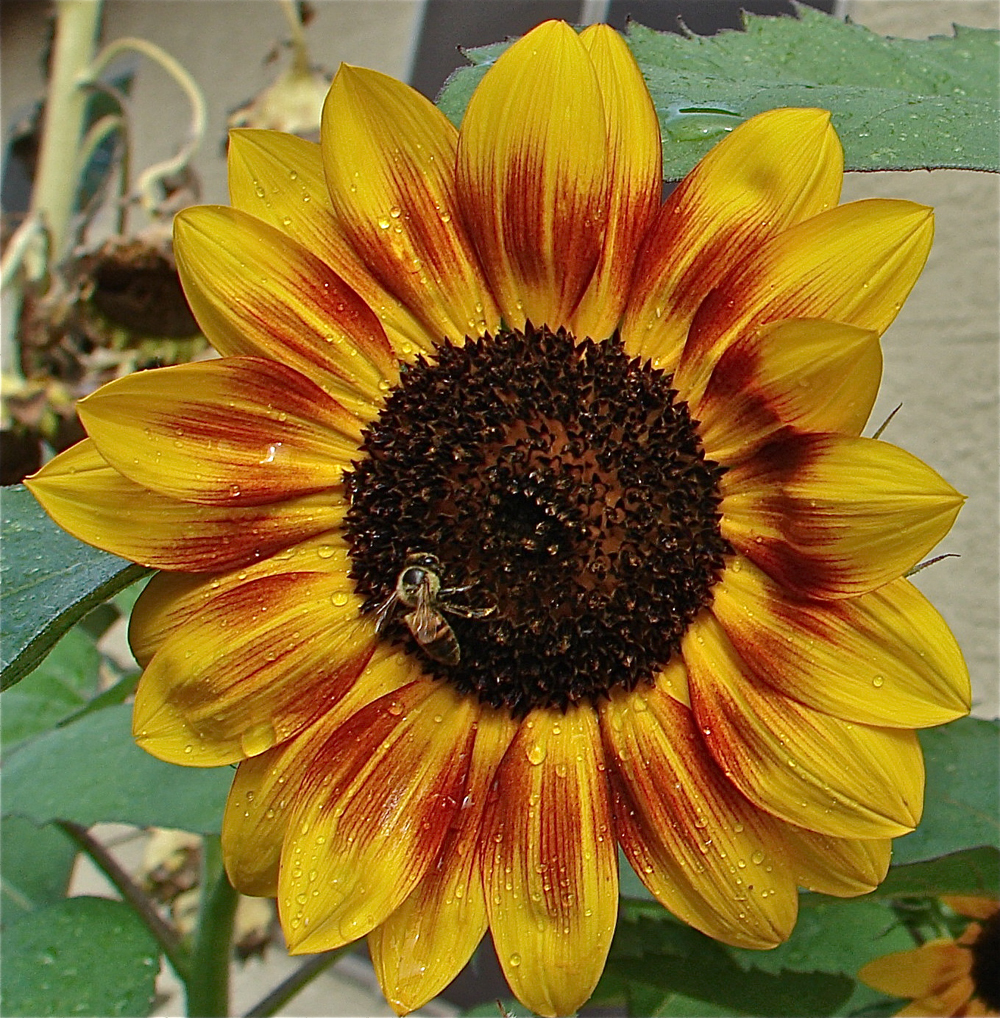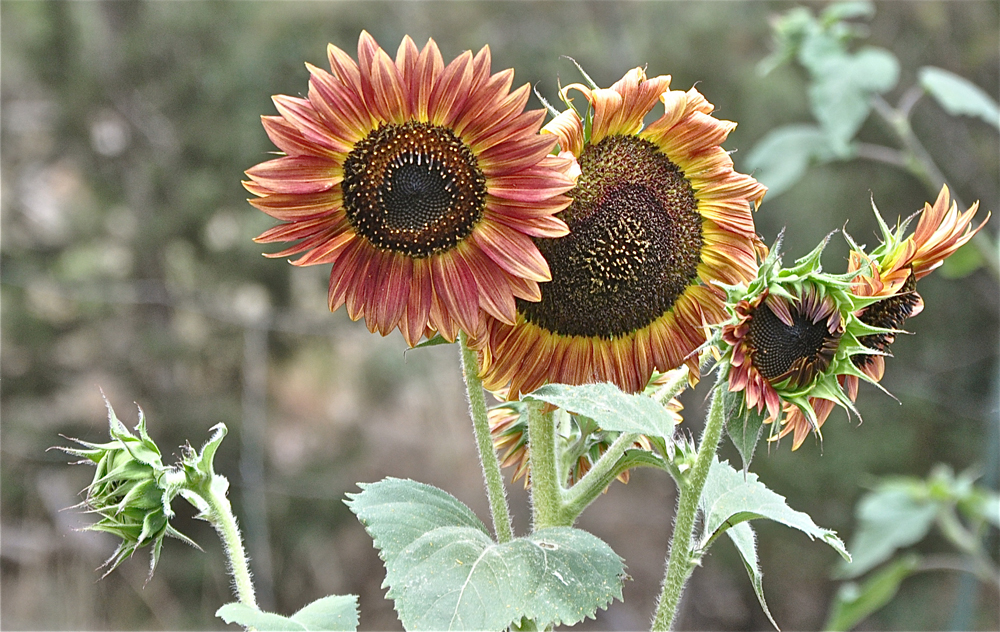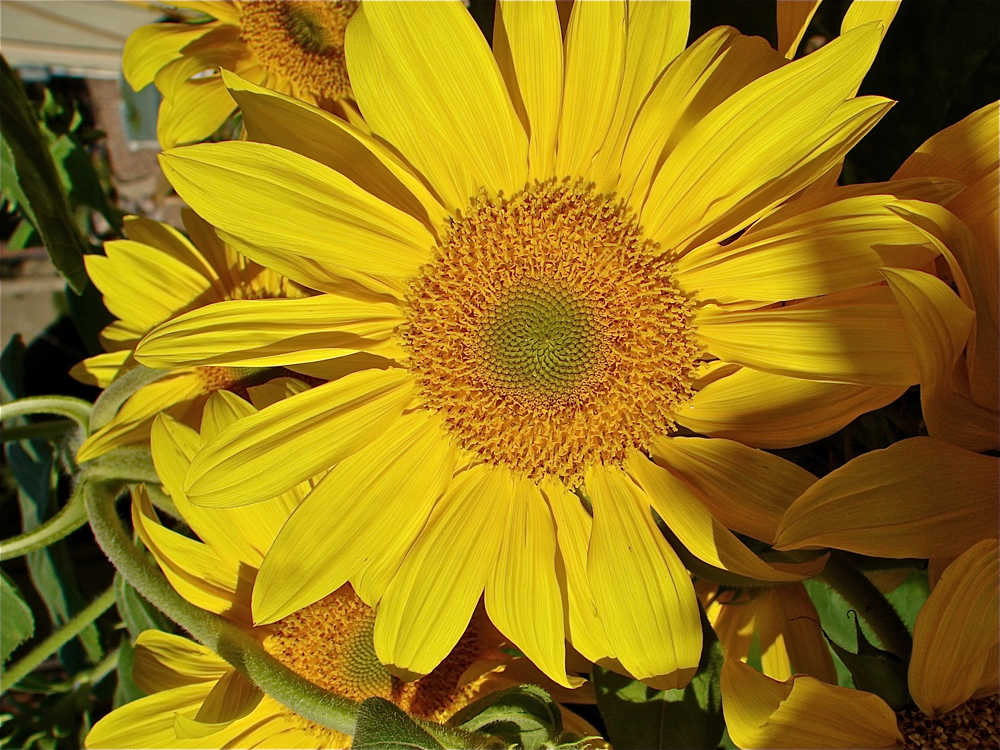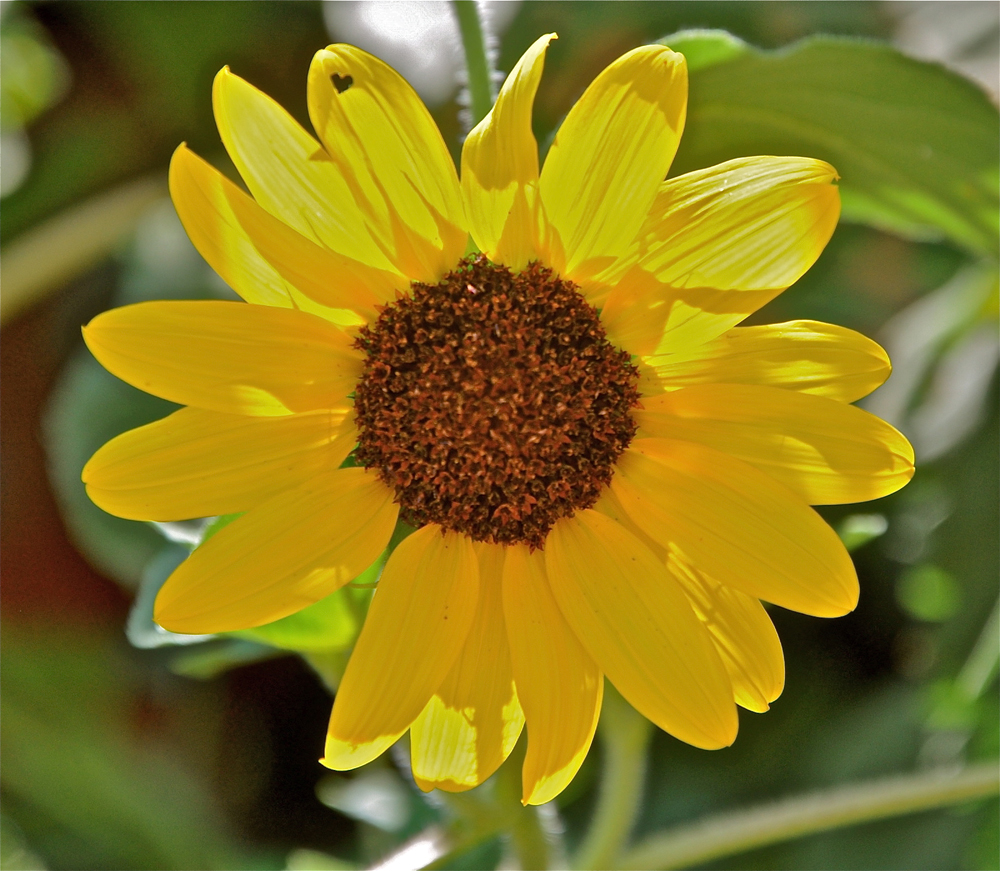
Photos: Where the Sunflowers Shine
Living on trust

Bees are the main pollinators of sunflowers. The many florets contain nectar that is highly attractive to bees. Sunflowers also develop a symbiotic relationship with mycorrhizae, a type of soil fungi. This relationship allows for the sunflower to ingest significant amounts of nitrogen, phosphorous and water as well as organic materials.
Useful beauty

Even though their beauty is amazing, sunflowers are commercially grown for their seeds, of which there are two types — oilseed and non-oilseed. Oilseeds are small, black seeds high in oil content, and, when processed, produces a cooking oil, cosmetic oil and ground meal. Oilseeds are the seeds used most often in bird feeders. Non-oilseeds are large, black-and-white striped seeds used in a variety of foods including bread and as a common snack.
Healthy beauty

Sunflower oil contains more Vitamin E than any other commercial vegetable oil. It is light in taste and appearance and makes an excellent and relatively healthy frying oil. Sunflower oil is a combination of polyunsaturated and monounsaturated fats and is very low in saturated fat levels.
Beauty, nourishment and inspiration

With winter soon to arrive in the Northern Hemisphere, the growing of sunflowers now shifts to the Southern Hemisphere, with South Africa and Argentina being the most prolific producers. With the ability to grow in such a wide range of temperature and soils, sunflowers continue to be a major contributor to mankind's food supply while bringing their incredible beauty to the landscapes of the world. Sunflowers have long been a favorite subject for artists, including such great artists as Van Gogh and Picasso. And sometimes a symbol even appears upon them, as seen by the natural cut heart on the flower above, suggesting that sunflowers are truly loved around the world.
Sign up for the Live Science daily newsletter now
Get the world’s most fascinating discoveries delivered straight to your inbox.









